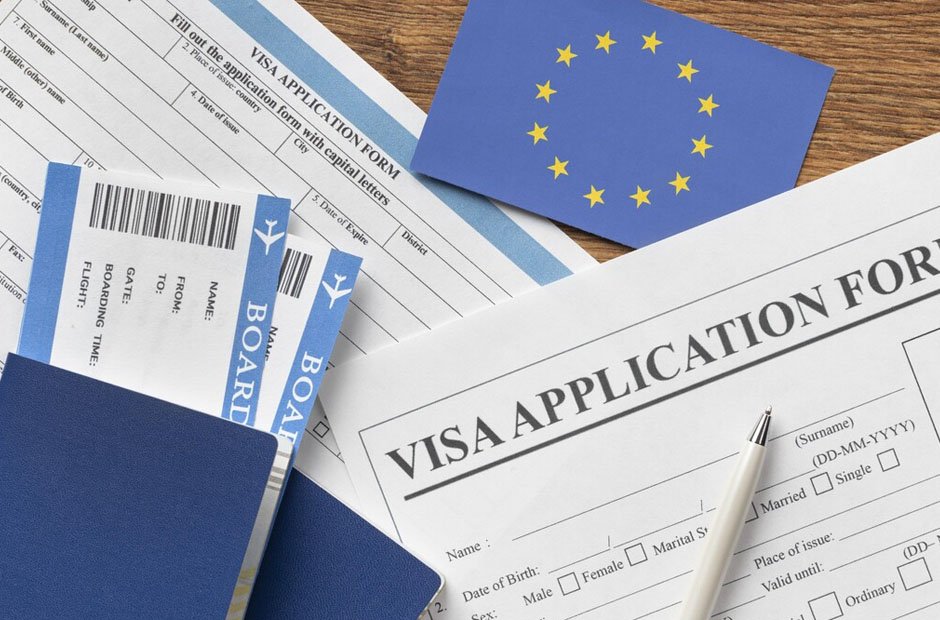Skip to the good bit
ToggleDreaming of wandering through Europe’s charming streets, indulging in French pastries, or gazing at Italy’s historic wonders? Before you dive into planning every detail of your Schengen adventure, let’s make sure your visa application is sorted. Having the right documents in place isn’t just a formality—it’s the first step to a smooth journey. With a bit of preparation now, you’ll be free to focus on the fun stuff. Ready to make this process hassle-free?
Let’s go through the essentials for a stress-free Schengen visa experience!
Your Schengen visa document checklist
Here’s the ultimate checklist to keep your application on track. Check off each item as you go, and you’ll be one step closer to your European adventure!
- Passport
Your passport is key to your Schengen visa. It needs to be valid for at least three months after you leave, have two blank pages, and be issued within the last ten years. Double-check for any previous visas or entry/exit stamps.
- Visa application form
Fill out the Schengen visa application form carefully, making sure everything aligns with your other documents. Some embassies offer an online form, while others may require a printed copy, so check with your consulate!
- A passport-sized photo
Your visa photo is more than just a picture! Submit a recent photo (last six months) with a plain background and a size of 35 mm x 45 mm. Embassies are strict—so avoid selfies or casual shots to keep things smooth.
- Travel insurance
Travel health insurance is a must, with a minimum coverage of €30,000 for emergencies. This should be valid across all Schengen countries. Some services, like Atlys, even let you purchase insurance during the visa application for convenience.
- Proof of financial means
Show you can support yourself by including recent bank statements or a sponsorship letter if someone else is funding your trip. Many Schengen countries have a minimum daily requirement—usually around €50—so confirm specifics with your embassy.
- Proof of accommodation
You’ll need to show proof of where you’re staying, whether that’s through hotel bookings, a rental, or an invitation from family or friends. This reassures embassies that you’re not leaving lodging to chance.
- Flight itinerary
Provide a round-trip or multi-country itinerary with your entry and exit dates. If you’re still finalising plans, a refundable ticket works as a placeholder to meet this requirement.
- Travel Itinerary
A detailed travel itinerary, including entry and exit dates, destinations, and accommodations, is required to show your planned journey. This document helps the embassy understand your travel plans and confirms your intent to leave the Schengen Area by the end of your stay. Think of it as a roadmap that shows the visa officer where you’ll be and when.
- Invitation letter (if applicable)
An invitation letter for Schengen should outline your host’s contact details, relationship with you, and the dates of your stay. Including your host’s proof of residency can also add extra support to your application.
- Proof of purpose (if applicable)
Make sure your documents match the reason for your travel. For tourism, include a travel itinerary; for visiting family or friends, an invitation letter works; and for business, a company invitation with your schedule is perfect.
- Cover letter (if applicable)
A cover letter isn’t always mandatory, but it can give your Schengen visa application a personal touch, especially if your travel plans are unique. Think of it as a quick introduction to your trip for the embassy—summarising why you’re visiting, where you’ll be going, and how you’ve planned your stay.
- Additional documents (if applicable)
Depending on your situation, you may need other documents, like proof of residency if applying from abroad, an employment verification letter, student enrollment confirmation, or a sponsorship letter. These give the embassy a clearer view of your background.
For minors, you’ll need additional documents, such as a birth certificate to prove the relationship, a consent letter from the non-travelling parent (if applicable), and copies of both parents’ passports. To stay on the safe side, check specific embassy requirements, as some may need custody or legal documents.
One last check—Have you booked your appointment?
Booking your Schengen visa appointment is one of the final steps in the application process, but it’s an essential one. Application centres’ schedules can fill up quickly, so it’s best to reserve your spot as soon as you have all your documents ready. Check with the specific centre for available dates, as some may require appointments weeks in advance.
Booking your visa appointment and managing each step can feel overwhelming. Using reputable visa service platforms, such as Atlys, can ease the process, allowing you to stay focused on gathering your documents—making sure nothing stands between you and your Schengen adventure!
Now you are ready for Europe!
With this checklist in hand, you’re all set for a smooth Schengen visa application. Stay organised, double-check each document, and avoid the common pitfalls. Now, feel confident as you start your journey to Europe—adventure awaits!







